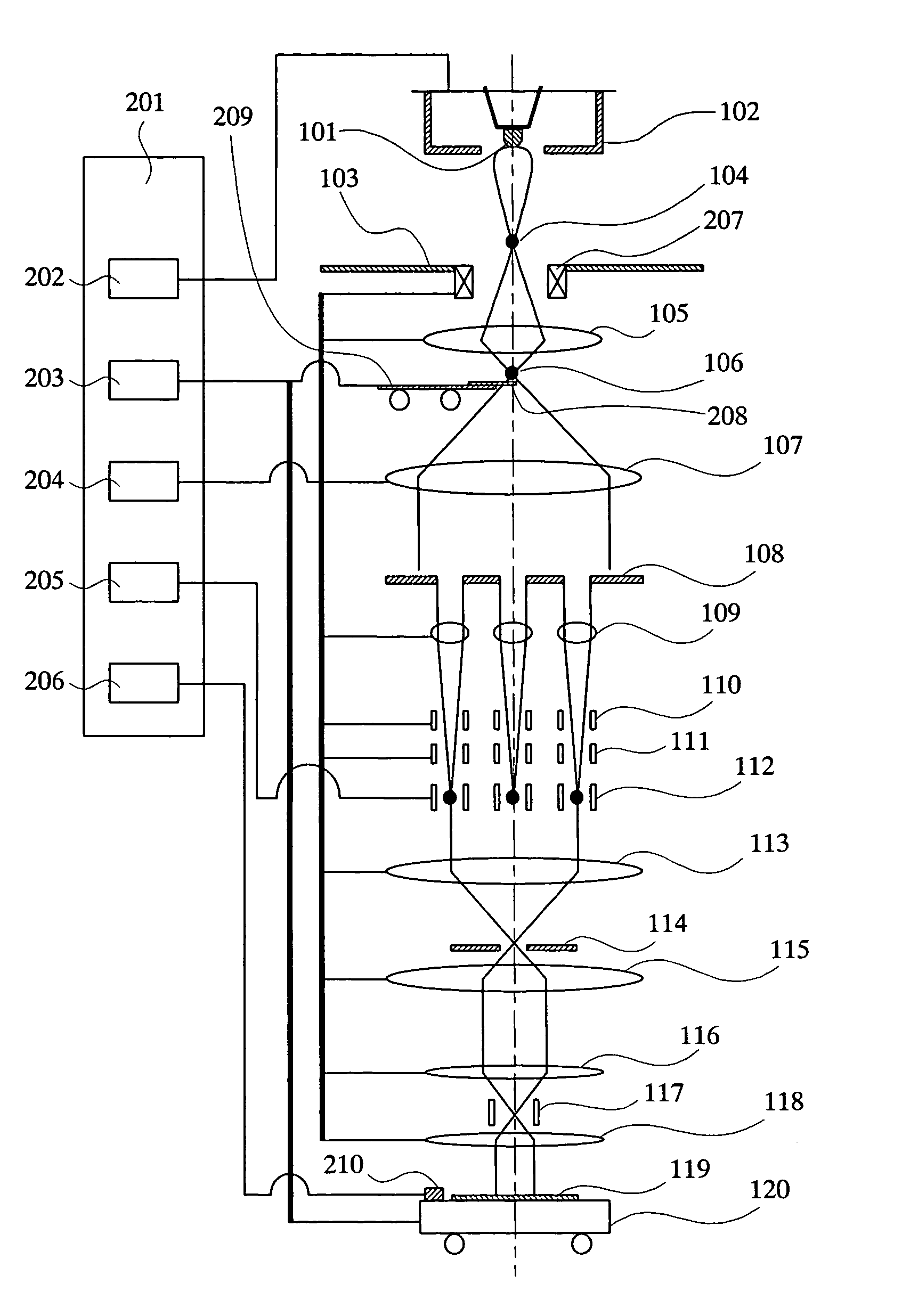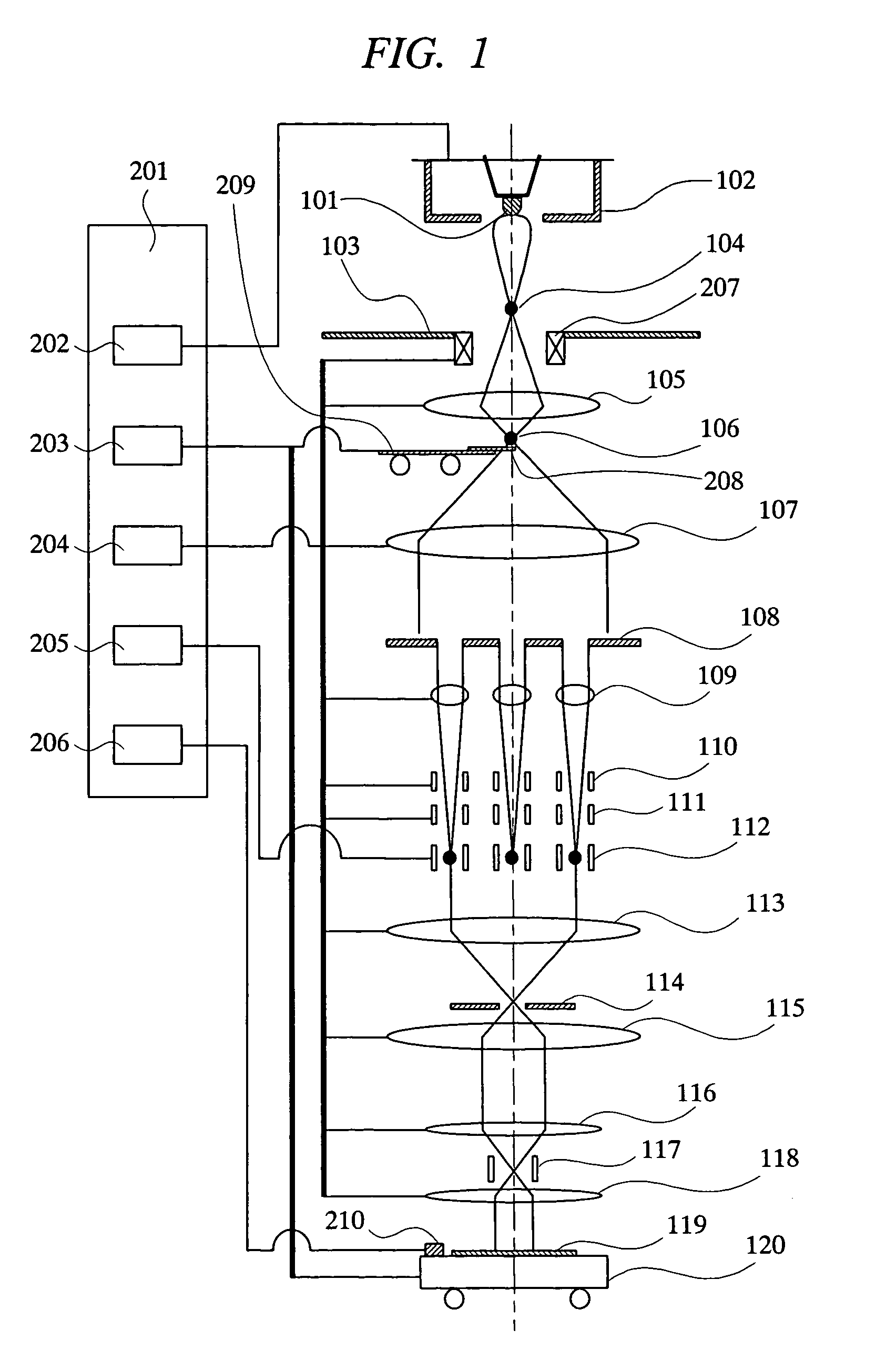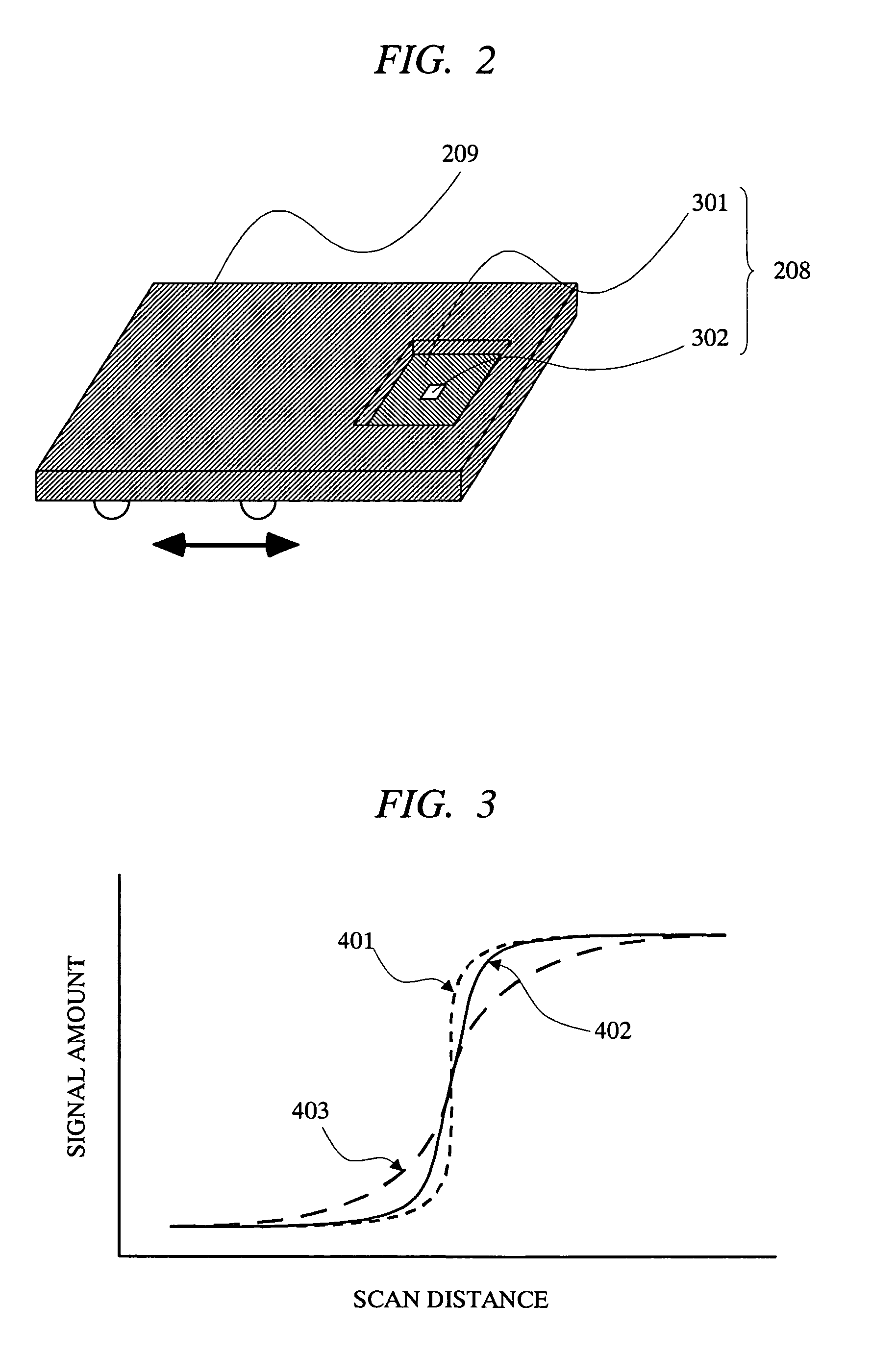Method and apparatus for applying charged particle beam
a technology of charged particles and beams, applied in the field of methods and apparatus for applying charged particle beams, can solve the problems of speed of processing subject, i, accuracy improvement, etc., and achieve the effect of improving the throughput of the charging particle beam applying apparatus and facilitating the position adjustment of the crossover
- Summary
- Abstract
- Description
- Claims
- Application Information
AI Technical Summary
Benefits of technology
Problems solved by technology
Method used
Image
Examples
first embodiment
[0051]FIG. 1 is a view showing a schematic structure of a multibeam electron-beam lithography system according to a first embodiment of the present invention. Members shown in FIG. 1 and having the same reference numerals as those in FIG. 13 indicate the same members as those in FIG. 13.
[0052]Firstly, with reference to FIG. 1, one example of the multibeam electron-beam lithography system according to the first embodiment will be described. The multibeam electron-beam lithography system according to the first embodiment includes, for example, an electron gun composed of a cathode 101, a Wehnelt cylinder 102, and others; an anode 103; an aligner 207; a source forming lens 105; a movable stage 209 equipped with a crossover regulation edge 208; a condenser lens 107; an aperture array 108; a lens array 109; deflector arrays 110 and 111; a blanker array 112; reducing glasses 113 and 115; a blanking aperture 114; objective lenses 116 and 118; a deflector 117; a stage 120; a Faraday cup 210...
second embodiment
[0070]FIG. 4 is a view showing a schematic structure of a multibeam electron-beam lithography system according to a second embodiment of the present invention. Components shown in FIG. 4 and having the same reference numerals as those in FIGS. 1 and 13 are identical to those in FIGS. 1 and 13.
[0071]In the second embodiment, two-stage electromagnetic lenses, that is, a first source forming lens 501 and a second source forming lens 502 are provided between the front focal plane of the crossover 104 and the front focal plane of the condenser lens 107. By using these lenses, the crossover formed by the electron gun is reduced to form an image on the front focal plane of the condenser lens 107. Since the first source forming lens 501 and the second source forming lens 502 are used together as a zoom lens, the crossover is reduced with an arbitrary magnification to form an image relative to the source crossover 106 on the front focal plane of the condenser lens 107.
[0072]Therefore, in the...
third embodiment
[0091]In the above first and second embodiments, a single crossover regulation edge regulating the height of the crossover has been used. By contrast, in a third embodiment, a plurality of crossover regulation edges are used.
[0092]FIG. 7 is a view showing a structure of crossover regulation edges for use in the third embodiment. The reference numerals “801”, “802”, and “803” denote crossover regulation edges with different heights supported by one movable stage 804. In the third embodiment, in place of the crossover regulation edge 208 and the movable stage 209 as shown in FIGS. 1 and 4, the crossover regulation edges 801, 802, and 803 are placed between the crossover 104 and the condenser lens 107.
[0093]In the present embodiment, through the same method as that according to the first embodiment, a condition under which an intermediate image of the crossover is formed for each of three crossover regulation edges 801, 802, and 803 is obtained. That is, a current for the source formin...
PUM
 Login to View More
Login to View More Abstract
Description
Claims
Application Information
 Login to View More
Login to View More - R&D
- Intellectual Property
- Life Sciences
- Materials
- Tech Scout
- Unparalleled Data Quality
- Higher Quality Content
- 60% Fewer Hallucinations
Browse by: Latest US Patents, China's latest patents, Technical Efficacy Thesaurus, Application Domain, Technology Topic, Popular Technical Reports.
© 2025 PatSnap. All rights reserved.Legal|Privacy policy|Modern Slavery Act Transparency Statement|Sitemap|About US| Contact US: help@patsnap.com



